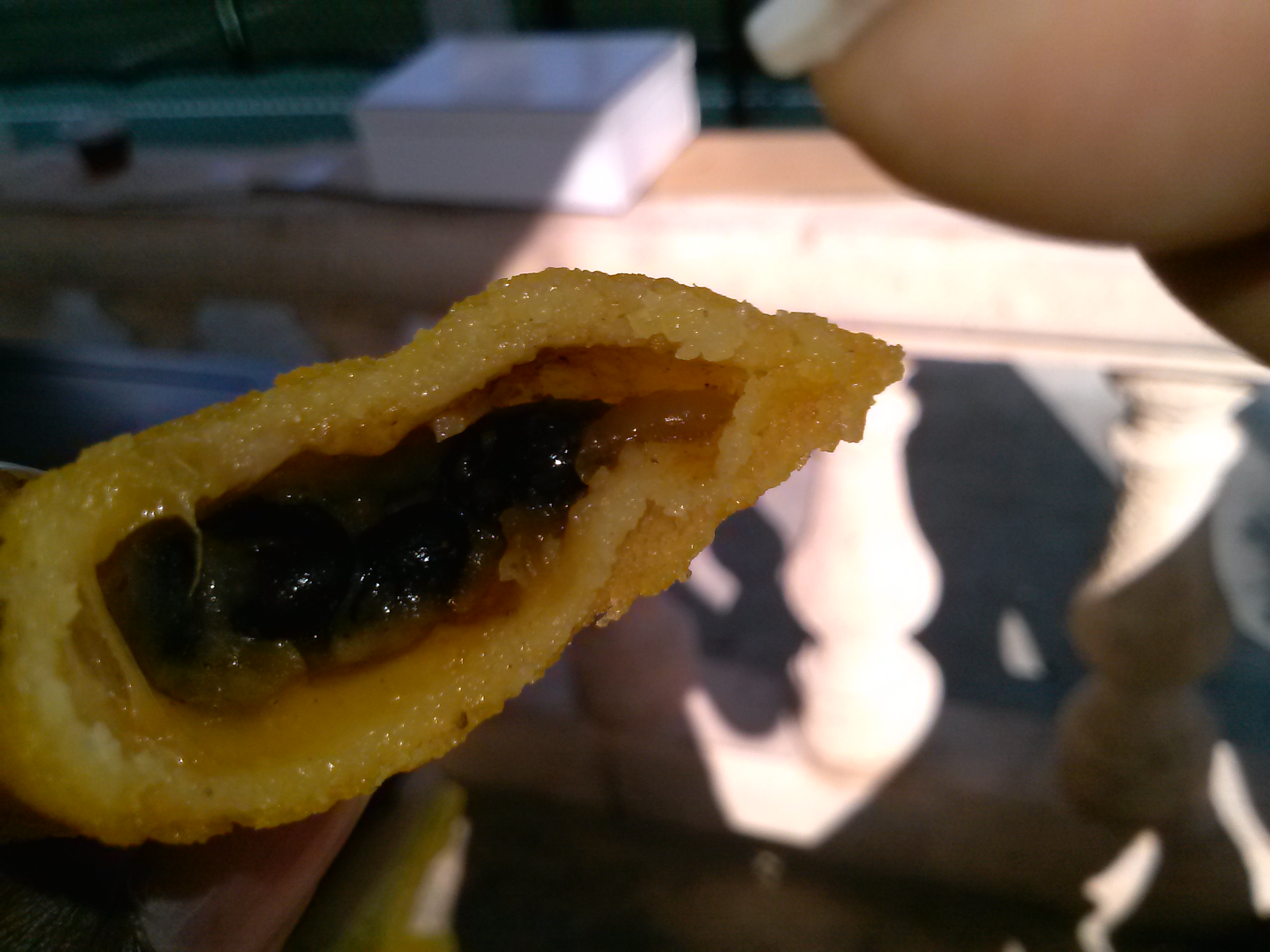Crack kills, mmkay?
Colombian empanadas, while utterly delicious, are a bit of a pain to make. Seasoned cooks can probably crank them out with little trouble. I am not, however, a particularly seasoned cook when Colombian cuisine is concerned. Most dishes are so time-consuming and extensive, that I don’t make them often. As such, I don’t get a whole lot of practice.
As some of my friends have found out when they have been forcibly recruited into helping with the empanada-making process, the empanada dough is not always easy to work with. The main ingredients are water and corn flour. If you don’t work quickly, the dough will dry out and start to crack. Cracked empanada dough means that your empanadas will also have cracks in them, which means oil seeping into your filling in the fryer and drying out your empanada. Or, worse, causing an explosion. There are still oil stains on my kitchen ceiling because of that. We definitely don’t want that.
My latest batch of empanadas were for a fellow Colombian’s baby shower. Since she is vegetarian, I had another chance to play around with meatless filling. I decided to fill them with southwestern-style black beans and cheese. Determined to have as few casualties as possible this time around, I made a few modifications to the assembly process. And, behold, much fewer cracks!
Nice, golden, and crunchy! Just the way an empanada should be! The bean and cheese filling actually worked very well with the corn crust. I think there will be a repeat of these in the future.
What did I do differently? I thought you’d never ask! For those of you that would like to try this on your own, here are a few tricks that I employed this time around.
- I made only half of the usual amount of dough at a time. This adds more time, since you have to make dough more often, but it definitely helps if you can’t crank them out at a good speed (which, I cannot).
- Instead of forming the dough into balls beforehand, I left the dough in the mixing bowl and formed one ball at a time as I was assembling them. Having the dough together in one lump helped it retain more moisture and not dry out as quickly.
- Before using a cup to seal the edge of the empanada, I placed the plastic ziploc bag over the empanada, and then sealed it. It feels like it made a tighter seal this way.
- Handle the dough as little as possible. The more I handled each empanada, the quicker they seemed to dry out and start to crack.
- Do not overfill your empanadas. Trying to close your dough over a too-large mound of filling is just asking for it. I got a little too ambitious with a few of them. I learned, though.
There you have it. Follow these steps, and you’re well on your way to empanada-making. Just make sure you make enough to share.





February 26, 2013 at 12:03 am
I love empanadas too but I have to try using corn flour next time. Do you think it will yield the same result if I bake them?
February 26, 2013 at 3:23 am
I actually asked my uber-Colombian mother about this once, and she said “NO WAY!” Of course, it never hurts to try. I’d mainly be concerned with the dry heat of the oven causing them to crack even more. The corn masa has a different feel and texture than the dough that is common to Argentinian style empanadas.
If you decide to try baking them, let me know how it goes!
February 26, 2013 at 5:46 am
Hmmm I have my own empanada dough recipe but I want to try this one. I will definitely let you know how it turns out.
February 26, 2013 at 2:18 pm
Is your empanada dough made with all purpose flour? To my knowledge, Colombians and Venezuelans are the only ones that use a corn masa for their empanadas, and deep fry them. All other Latin American countries bake theirs in a pastry crust. Growing up in a Colombian household, I was shocked the first time a non-Colombian offered me an empanada and gave me what looked like a meat-filled turnover. An Argentinian friend and I have a friendly rivalry going about whose country’s empanadas are better. =)
May 17, 2020 at 1:36 am
In her northern part of the Philippines, there’s a place called Vigan Ilocos Sur and we called it “ilocos empanada. The Dough is made of rice flour. The filling is sautéed mongo beans, cabbage/papaya with longganisa and in the center is egg.
May 17, 2020 at 1:38 am
In the northern part of the Philippines, there’s a place called Vigan Ilocos Sur and we called our empanada, “ilocos empanada. The Dough is made of rice flour. The filling is sautéed mongo beans, cabbage/papaya with longganisa and in the center is egg. And deep fried to perfection. It’s very close to Colombian empanada dough texture. I have to try using masa corn next time and see the difference
March 29, 2013 at 5:03 pm
Oops late reply but yeah, I use apf for my empanada and used to fry them but not anymore coz they’re just as good baked.
http://foodie19.blogspot.com/search?q=chicken+empanada
May 9, 2013 at 5:31 am
And the veggie empanadas were a hit!
May 13, 2013 at 4:40 pm
That is great news! Did you use the corn flour? And, what was the filling made of?